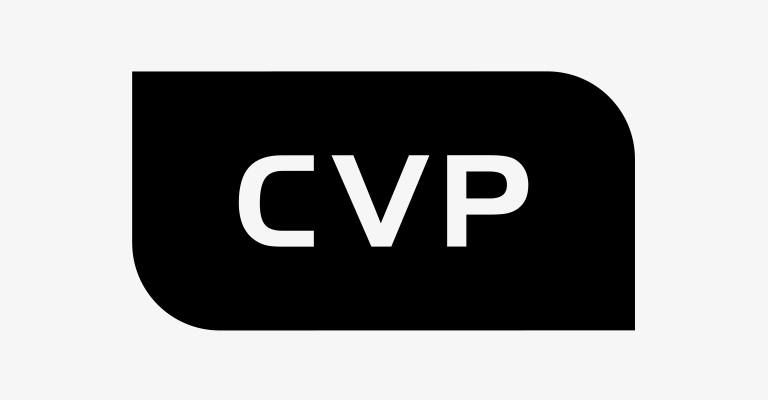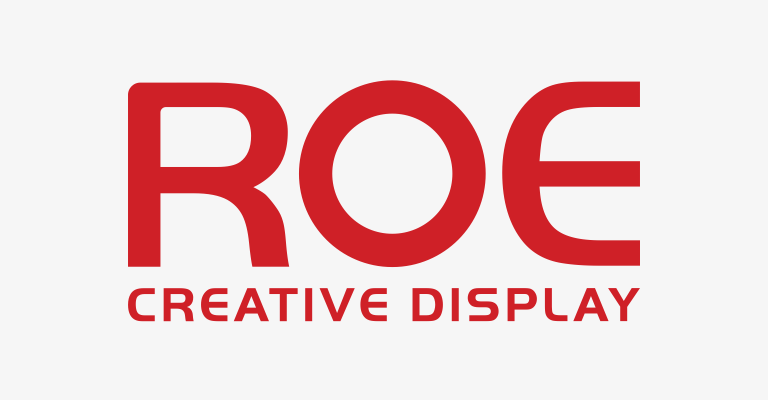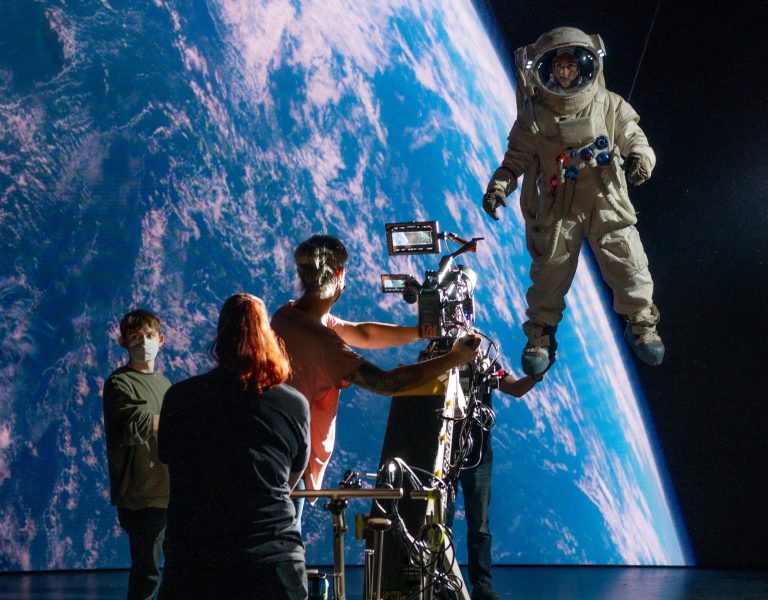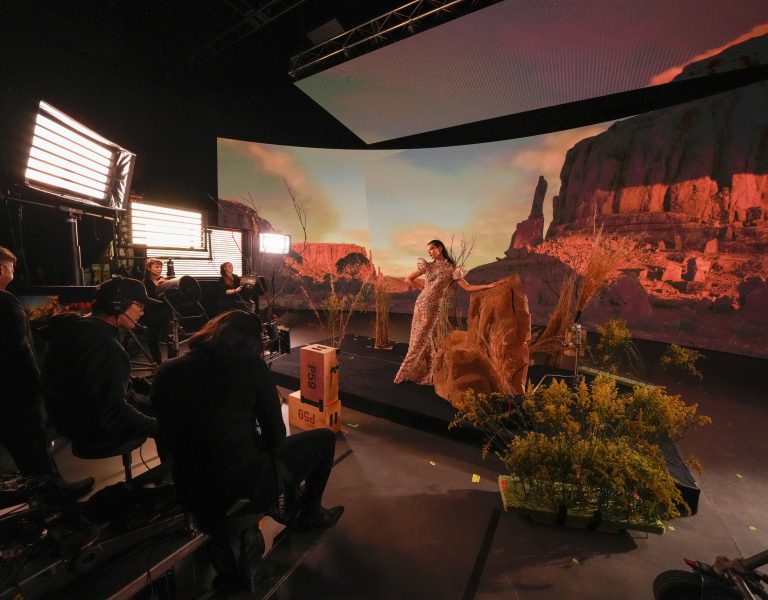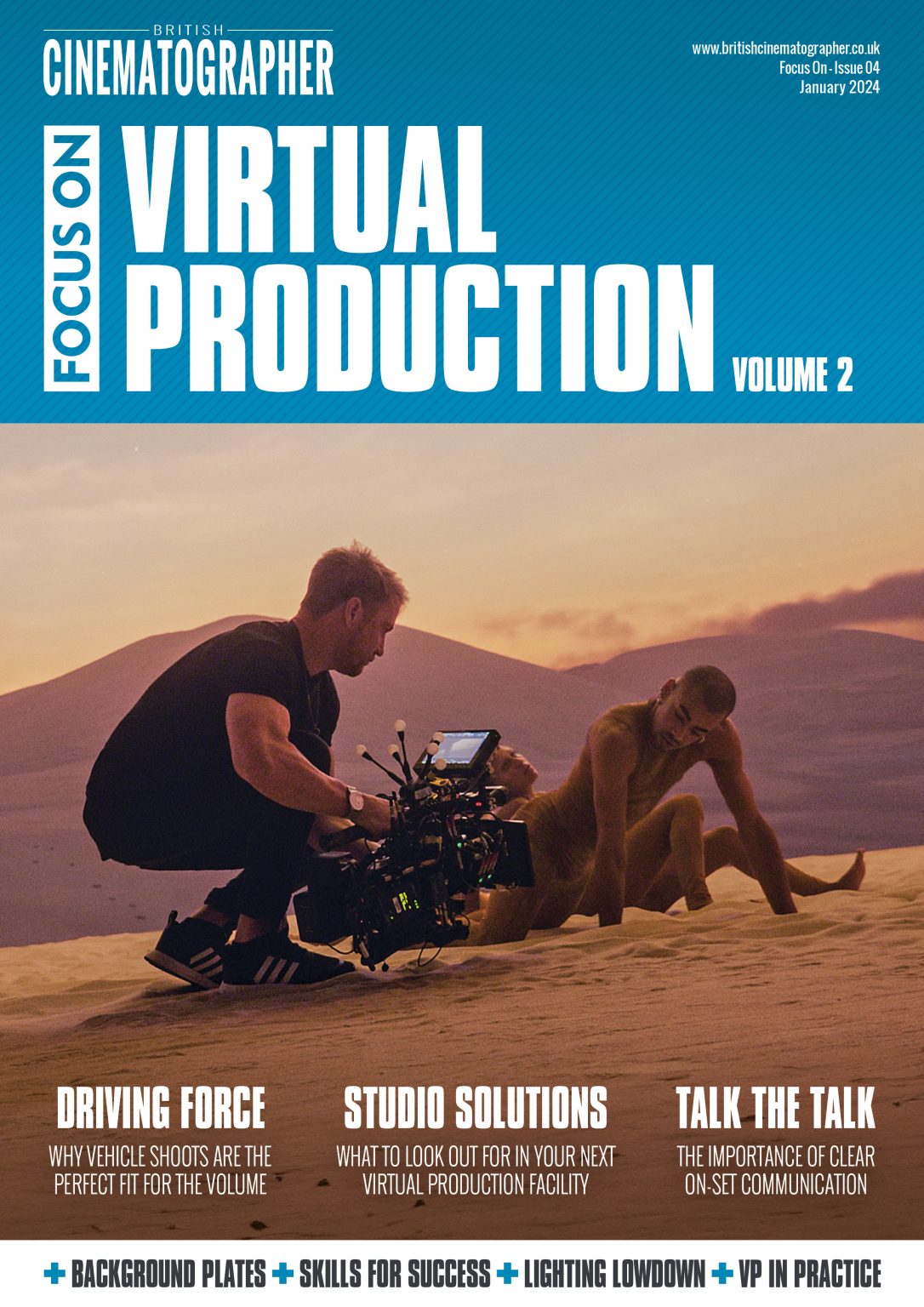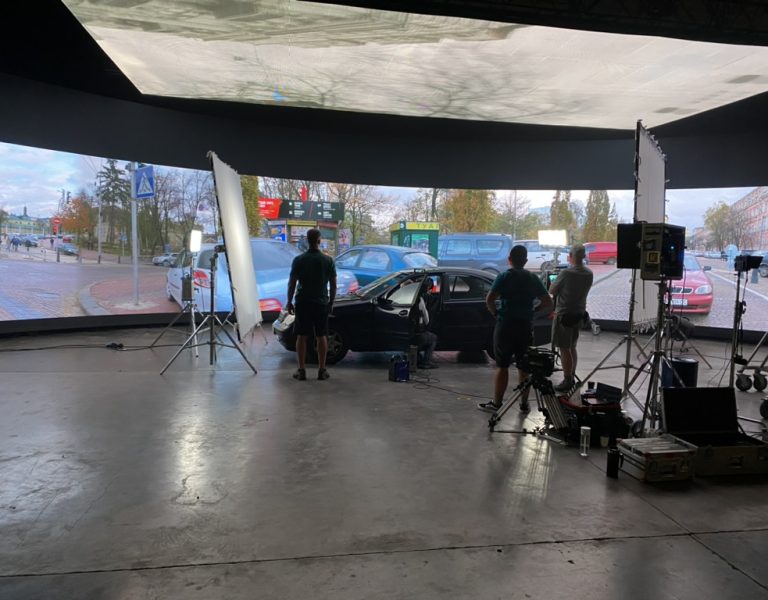The rise of virtual production has proven a learning curve for both students and lecturers in academia. Get to know the initiatives futureproofing the next generation’s skills set.
Bringing new people up to speed on a technology is tough. When that technology is yet to find its final form, it’s even tougher. Even so, the sheer demand for people has prompted some of the industry’s most experienced educational institutions to develop courses to teach people about virtual production.
Johnny Johnson is based at NFTS (the National Film and Television School) and holds the title of senior technician at StoryFutures, an organisation designed, among other things, to do exactly that. As with so many early adopters of virtual production, Johnson’s involvement arose from a fortuitous set of circumstances: “I got into VR software development which involved game engines, so by coincidence I was correctly placed. It happened to fall together technologically. I was one of those few people who had a film background and also game engine background.”
Johnson’s work involves several courses which attract applicants from a variety of backgrounds. “They’re DPs; they’re also compositors, directors, they bring different skillsets to it. The focus is on how you tell the best story, rather than how you do stuff in the engine. We make short films and stuff. They go away at the end of the course knowing how to do basic lighting in scenes in Unreal. That’s a no-brainer win for any DP.”
Lighting for virtual production is naturally key among a cinematographer’s concerns, though the NFTS course, as Johnson explains, covers broader ground, and perhaps more crucial fundamentals. “There’s a lot to unpack. It depends what most people think about when you say VP. Lighting is not the only place it gets sticky. Things like optimising the content to make sure it runs smoothly on an LED wall… it is a complicated beast, because it’s capable of so many things.”
Film school courses have sometimes suffered a reputation rather dented by patchy subsequent employment prospects. At a time of such flux, up-to-date statistics are hard to come by, though Johnson suggests that recent VP graduates have done well. “We have the six-month VP course that the NFTS runs, which is a part time course taking people from no experience when they arrive, to putting a scene together as a team and shooting a short film. We haven’t got a two-year masters yet, where people are learning things to an extreme level, but within six weeks it is possible for anyone to get into it. The last group graduated in June this year. There’s not that many people who come with six months of experience.”
Students who have an easier time, Johnson suggests, are more likely to come with film and television production experience than from a background in the games industry. “I find it’s easier to get film people to learn game engines because they know how the film is made, the hierarchy, than people with extensive game engine experience coming into film. That’s a less easy transition. It’s not impossible, but a lot of people coming into VP have come from software or games. And one thing I do like to say to all the people who come onto our courses – you don’t need to know programming to use VP as a filmmaker.”
Keeping the technology out of the way of the creative has always been part of a camera department’s work, and Johnson likes to ensure that his newly minted virtual production graduates, and particularly the people responsible for what goes on the wall, continue that philosophy. “I will say there has been a leaning, because it’s a new tech, toward making the tech the focus. Content on LED walls is tricky – design it in a computer, get on set and find it’s not looking right. Lighting is a DP issue, but everyone notices whether the art doesn’t look right.”
The student experience varies depending on that student’s desires for the future, as well as the range of experience that Johnson describes. Deryck Jones is a student on the MSc Virtual Production course at Backstage Academy, though it’s not his first experience of academia. “I’m a mature student,” he begins. “I started off with a fine art degree years ago, ended up having a career in new media… and went into new media, which was CD-ROMs, a blend of traditional media, a bit of programming, bit of video, and I had my own company which was an internal communications company. Just before COVID I broke away from that to do my own thing. An important thing to say is that I don’t come from a film and TV background or a games background, I did a fine art degree.”
Jones’ introduction to virtual production included facilities such as the Production Park and XPLOR, a research centre in Wakefield dedicated to the research and development of live entertainment and adjacent technologies. “Just before COVID I found out about Production Park and XPLOR, visited, and it was a really inspiring kind of space. There was a lot of energy and I thought ‘I’m going to do whatever I need to do to get there’. I ended up on the first MSc postgrad course in virtual production. I’m doing it part time and that was out of choice – I’m funding myself, so I wanted to keep half of it for commercial freelance work and the other half for study.”
The course is accredited via Backstage Academy’s association with the University of Bolton. Early discussions include issues as fundamental as the various techniques which exist under the rather general heading of virtual production, something that’s often glossed over in the current enthusiasm for Unreal Engine and LED videowalls. “You go in with an assumption of what VP is,” he recalls. “The first thing you learn is that VP is many things to many people. You get people who… drop a green screen in, and drop a plate in. Then you get people who are using Unreal Engine with a green screen, then people with LED walls.”
With virtual production facilities of the LED-wall variety inevitably attracting a high day rate, getting hands-on with the rarefied technology is something most students, Jones included, value highly. “From a postgraduate point of view, you’re still expected to work self-sufficiently, but the course requires some kind of hands-on training as well. In terms of exposure to the stuff that’s available, I’m lucky enough to be able to work with LED walls and disguise servers and a couple of different tracking systems and cameras. It’s about understanding the technical side, the genlock, the implications of an LED volume in terms of colour management, the colour capabilities of the LED screens, and getting that all into the camera.”
Colour management became a subject of special interest to Jones, sparking a series of projects around ideas that might improve results and make virtual production a little more user-friendly. “I wrote a paper about making a compelling image. Image light and reflected light can make it look a bit suspect… I did a second project where I was visually controlling content with Open Sound Control [a networked show control protocol]. I could create a visual interface on an iPad, and when you moved the slider up and down it’d communicate with Unreal Engine. You could have a DP come in, use an iPad, and select the golden hour if you want it. The faders were metaphors for these more subjective decisions.”
Lecturing on such a young subject inevitably involves something of a process of discovery. Tony Hipwell and Laura Hilliard are both academic fellows in Film Production at Salford. “Tony and I teach together on a general filmmaking module that’s for second years about five- to eight-minute short filmmaking. It’s part of a three-year program with six or seven hundred students.” Given the newness of virtual production as a technique, expanding the university’s production-related curriculum to include it has created opportunities to learn existing techniques and discover new ones.
Designing appropriate courses has also required, Hipwell says, a degree of caution. “I’m currently leading the VP push, and a number of other degrees in that field. It’s so interesting, trying to figure out how to bring it in; there’s no one size fits all. There’s this gold rush in terms of trying to upskill people in Unreal Engine. We’ve seen other places rushing in and sometimes doing things that don’t fit what practitioners need. We’ve had some really good hands-on time, some general brain-picking time in terms of what they’re looking for in terms of the skills gap.”
The need to keep the emphasis on storytelling, rather than technology, is one Hipwell mentions early on. “My approach at the moment, as a writer-director, is how we, as creatives, interface with VP. That’s how we’re coming at it, to say how we can create an [approach to teaching] that suits below-the-line crew to interact with this new toy, but not in a way that’s overpowering.”
New discoveries arise particularly from practical, project-based work, something that’s particularly relevant as new techniques for virtual production are commonly developed on the job. “That’s where education can step in,” Hilliard points out. “You can do a project away from the financial pressures of a client. It’s a testing ground. I want education to find a better way to let us have a testing ground. We are not a traditional field in the university setting. That’s the only power we have, as teachers or lecturers, to do a project. They trust us to ask them to do projects that will challenge them. They will do that as a grade, and we do it together, so we learn something.”
“That’s the benefit of being at a university,” Hipwell confirms. “Research opportunities, some potential pushing of the limits of what the tech can do. For instance, the TV series 1899 was mostly shot on a boat in the sea – what if you’re pushing in water, fire, how far can we push the physical conditions of the set within the LED volume? Is that something which can be done? As teachers we’re supposed to be investigating stuff as well so hopefully it’ll provoke some more robust understanding.”
That robustness, Hipwell goes on, is reinforced by cooperation with commercial facilities, something that’s become almost essential in any case given the investment represented by a virtual production setup. “No university is going to be able to get something equivalent to the ARRI stage,” Hipwell points out, “so we’re looking, rather than building our own environment, at places like Pathway, something that’ll have more of an industry connection. We have a lot of accredited partnerships at Salford.”
“This stuff has only been common knowledge for about three years now,” Hipwell muses. “It’s like CGI in the aftermath of Terminator 2 and Jurassic Park… now we’ve reached an interesting place, a happy medium.” Ensuring virtual production ends up in a similarly fecund and kindly state is, he says, the long-term goal, and that requires good people. “It’s not just the obvious things – the DP, sound, but also the production designer, costume designer… the myriad ways that your role will interface between virtual and real… every role will be engaged in some ways with that. The scheduling, the budgeting. An awareness of how to do that with VP rather than traditional. You need to understand the workflow. As long as you understand the process you won’t be out of a job.”
–
Words: Phil Rhodes






